ABOUT THIS GRAPHIC STORY
Section 1 of this story looks at Simple Machines — see https://ai-ed.ca/simple-machines
Section 2 (see below) looks at Machines that “Think”.
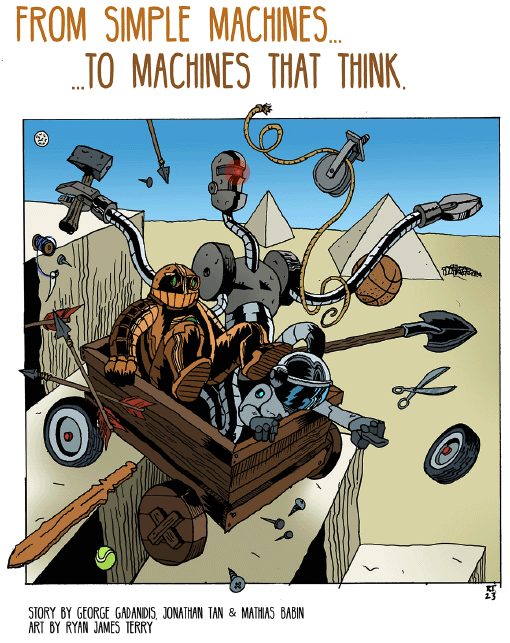
MACHINES THAT THINK
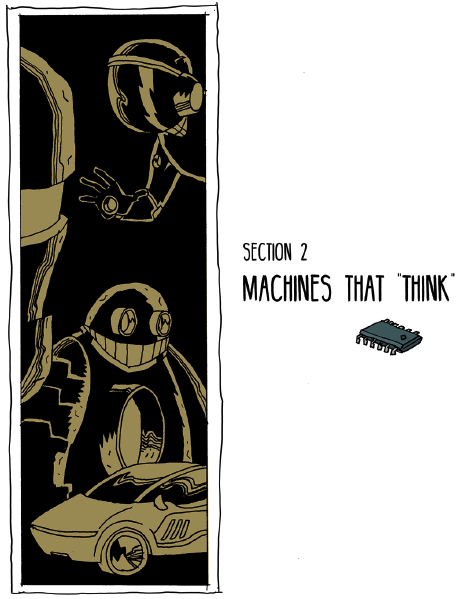
MENU
Let’s learn about machines that think:
- Can machines think
- Learning like a baby
- What do machines see?
- Reinforcement learning
- Supervised learning
- Unsupervised learning
- Machine + personality?
PAGE 17 – can machines think?

REFLECT

- What does it mean to think? Give an example.
- What does it mean to learn? Give an example.
Thinking and learning are intertwined.
Let’s take a closer look at how machines learn …
PAGE 18 – learning like a baby
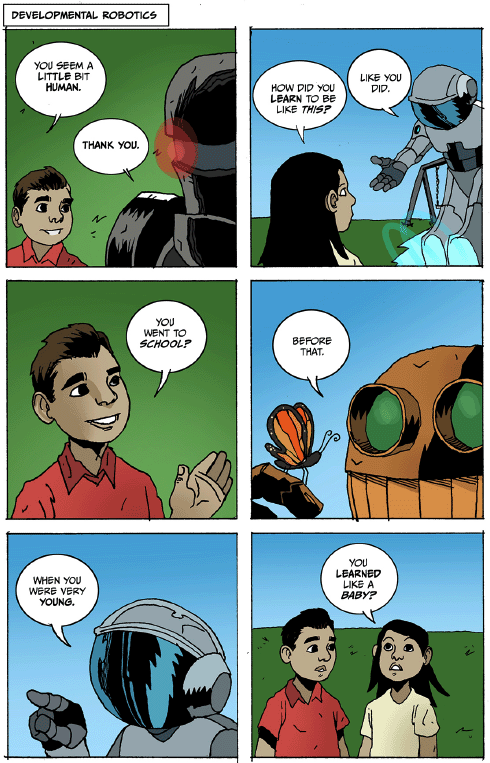
PAGE 19 – more learning like a baby
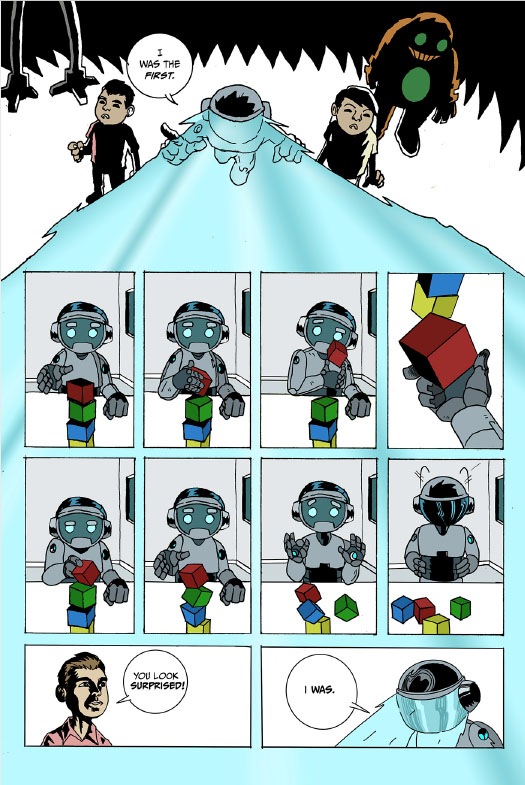
REFLECT
Do you learn from playing?

What do you learn from playing?
- Give an example of a playing situation, and describe what you learned.
PAGE 20 – learning from surprises
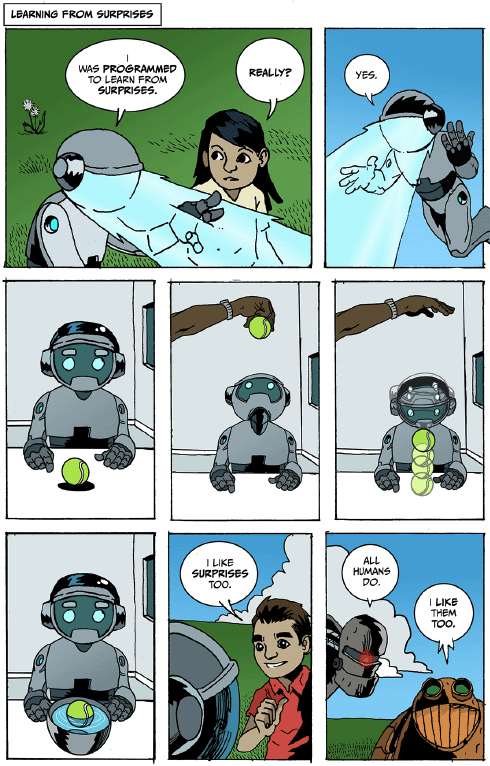
REFLECT
Do you learn from playing?
What do you learn from playing?
- Give an example of a playing situation, and describe what you learned.
PAGE 21 – learning from play
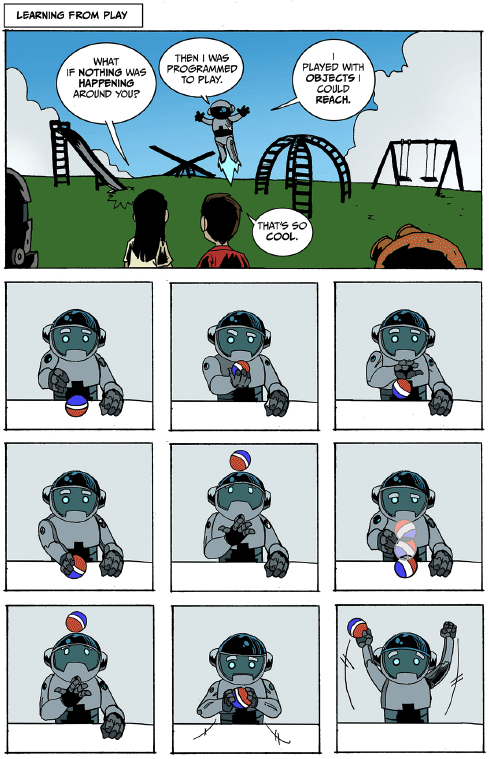
REFLECT
View the video of the iCub robot learning by interacting with its environment.
- What is interesting?
- What is surprising?
- What questions do you have?
PAGE 22 – what do thinking machines see?
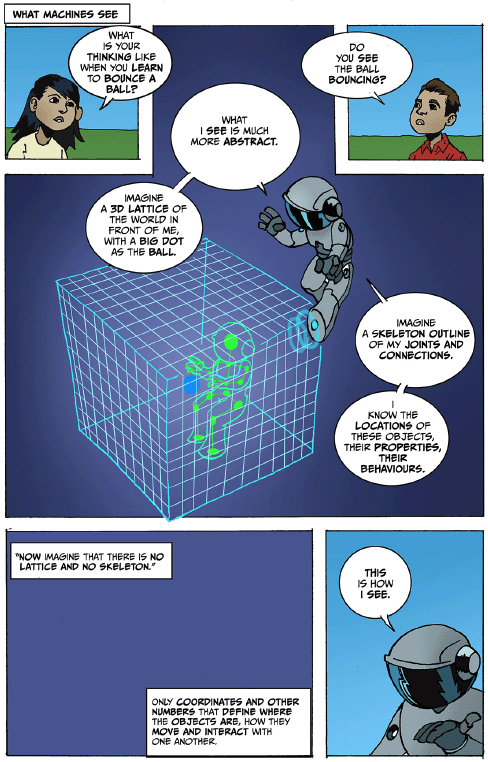
ABSTRACT MACHINES
Automata do not have to be physical. They can be abstract.
Like a diagram of how a mechanism works.
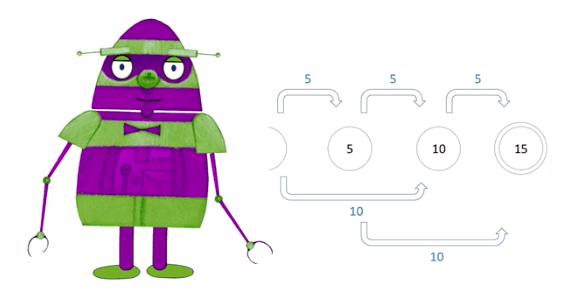
Example: Let’s build abstract automata of how turnstiles and vending machines work.
- Abstract automata help describe, analyze, and understand discrete systems, like computers.
- The inputs and outputs of discrete systems are either ON or OFF (1 or 0).
- Abstract automata are used in the development of computational theory.
Extend: Work with a partner to create the abstract automaton for a vending machine where snacks cost 25 cents
PAGE 23 – machine learning through reinforcement
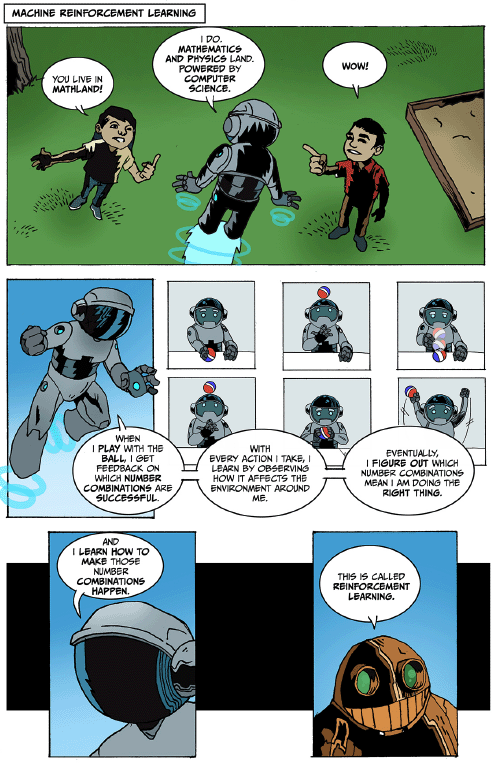
PAGE 24 – human learning through reinforcement

PAGE 25 – supervised machine learning
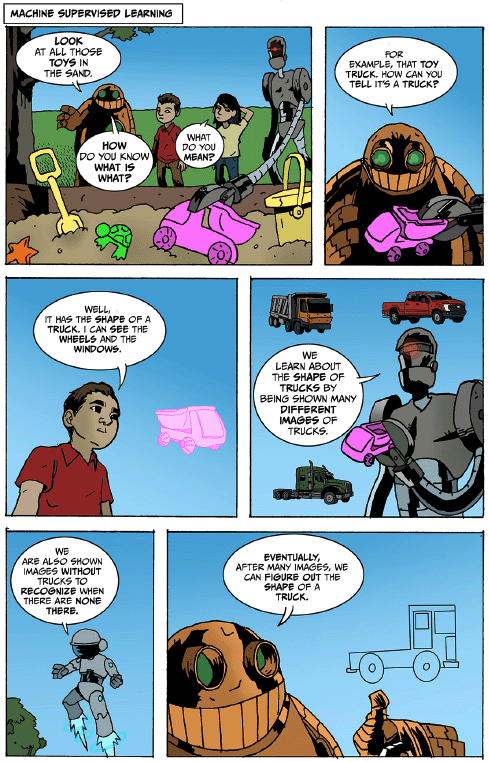
PAGE 26 – supervised human learning
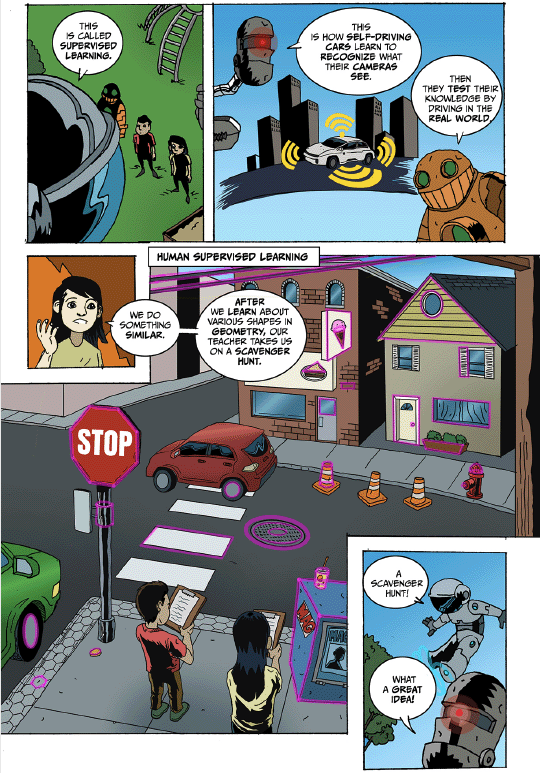
PAGE 27 – unsupervised learning
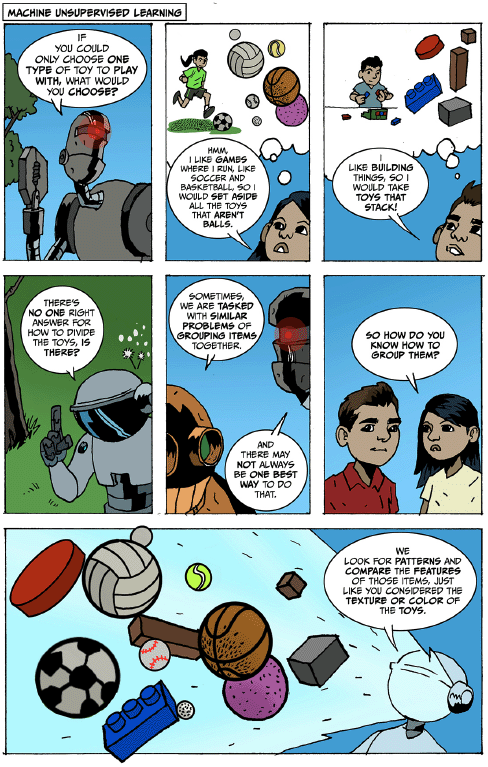
PAGE 28 – more about unsupervised learning
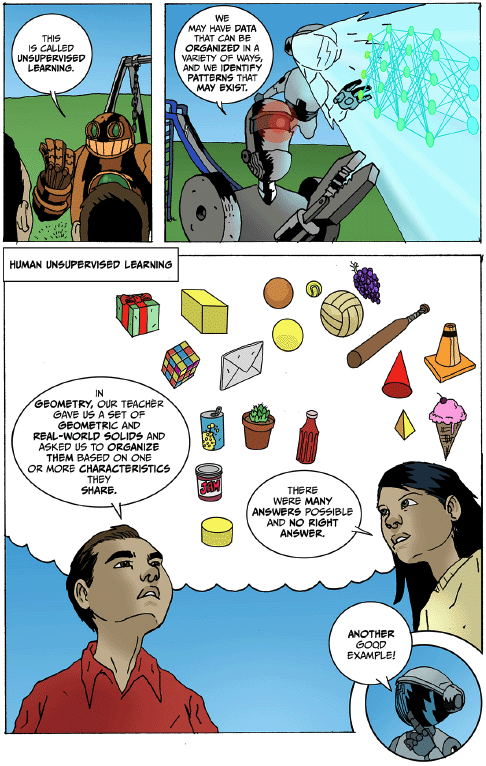
PAGE 29 – does a thinking machine have a personality?
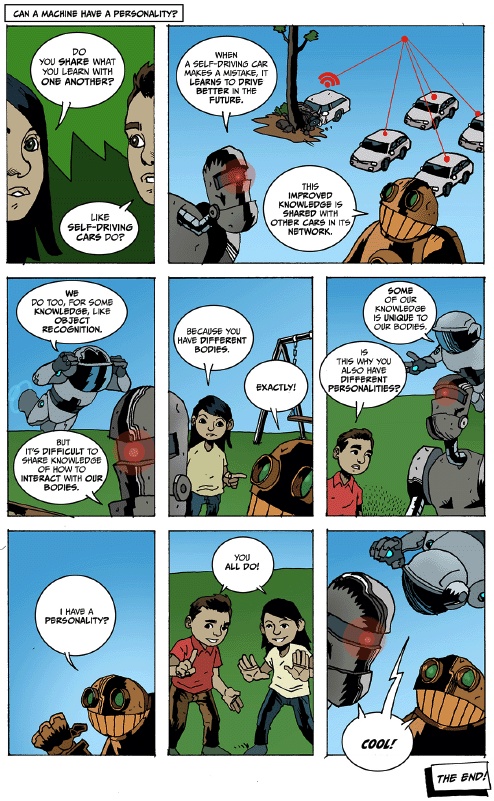
REFLECT
What did you learn about machines that learn?
What else do you want to know?
